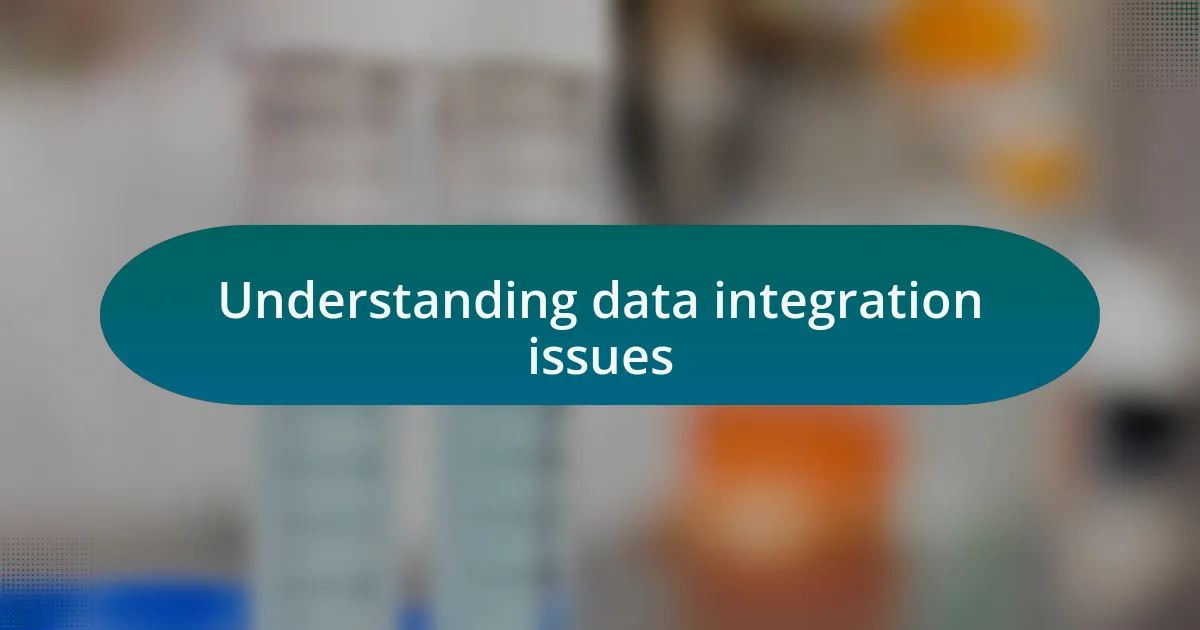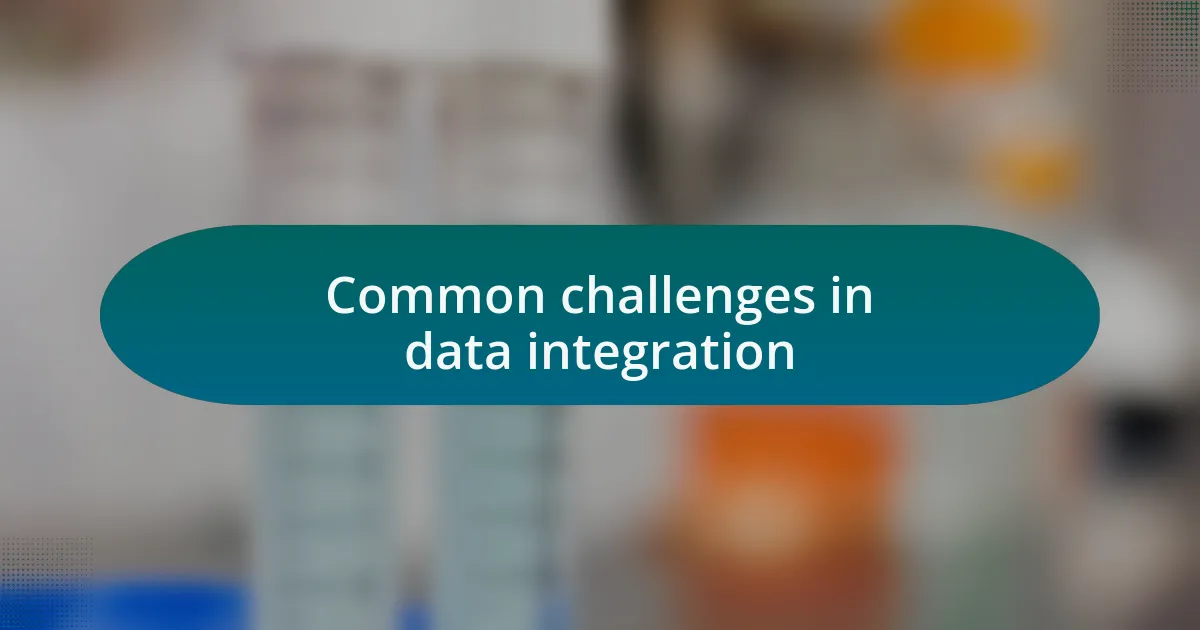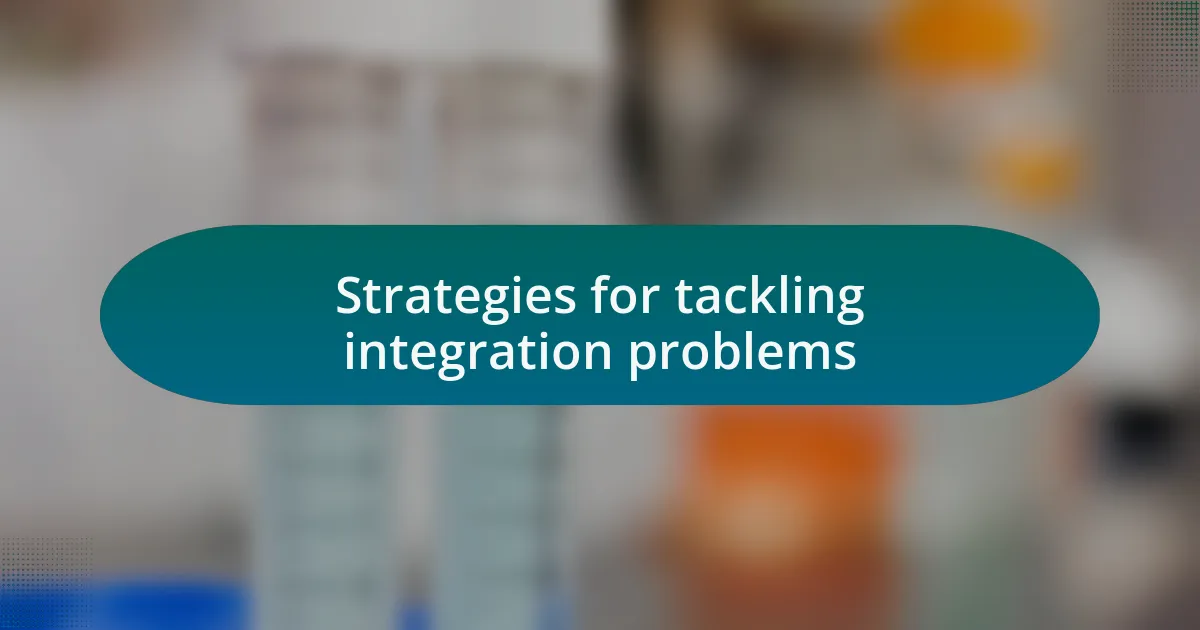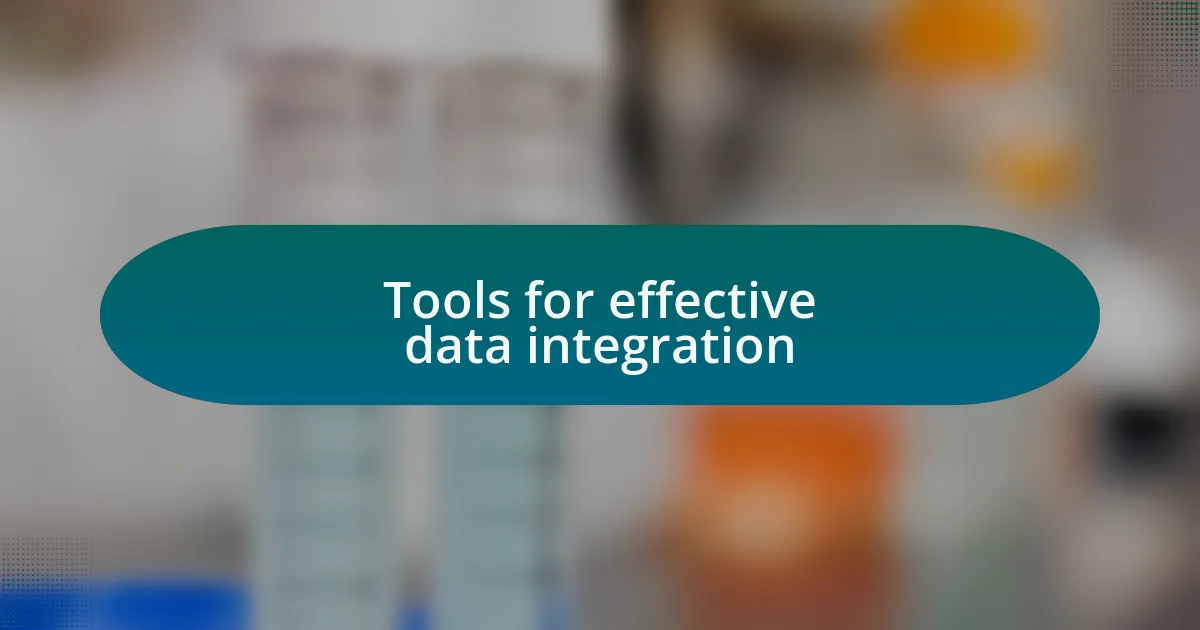Key takeaways:
- Data integration challenges often stem from differing formats, data quality issues, and communication gaps between technical teams and researchers.
- Establishing clear data governance policies, leveraging data transformation tools, and fostering collaboration can significantly improve integration processes.
- ETL tools, API connectors, and data quality tools are essential for effective data integration, ensuring seamless data flow and accuracy.

Understanding data integration issues
Data integration issues can arise from a variety of sources, leaving many researchers feeling overwhelmed. I remember the frustration I felt when disparate data formats made a simple task feel insurmountable. Have you ever found yourself staring at a spreadsheet, wishing it would magically align with your research needs? I can assure you, it’s a common experience.
When different data sources operate on varied protocols, it can create a chaotic environment. In one project, I had to merge quantitative data from a survey with qualitative feedback from interviews. Each dataset spoke its own language, and it took significant time to translate them into a cohesive narrative. This example highlights how integration isn’t just about compatibility; it’s about finding a common ground that respects each source’s unique voice.
Managing data silos is another critical aspect of understanding integration issues. I once witnessed a project stall because teams were hoarding data instead of sharing it openly. Reflecting on that experience makes me wonder: how often do we prioritize our information at the expense of collective progress? Navigating those silos requires both clear communication and a willingness to collaborate, which are essential for successful data integration.

Common challenges in data integration
Data integration often encounters the challenge of differing data formats. I recall a particularly taxing experience when I was collating datasets from various research teams, each stubbornly adhering to its own format. It felt like trying to fit puzzle pieces together that were drawn from entirely different boxes. Have you ever spent hours reformatting a simple CSV file, only to realize the underlying data was still inconsistent? It’s a reminder that even minor differences can complicate the integration process significantly.
Another significant hurdle lies in data quality issues. During one of my research projects, I faced a mountain of incomplete data from an external source. The more I tried to clean and verify that information, the more I felt like I was chasing shadows. How can we trust our findings if the foundational data isn’t reliable? This experience taught me that rigorous data validation processes are essential to ensure that integration efforts yield trustworthy results.
Lastly, there’s often a disconnect between technical teams and researchers. In one particularly eye-opening meeting, I witnessed the frustration of data scientists who struggled to communicate their needs to the researchers who depended on their datasets. It made me realize that bridging this gap requires more than just technical skills; it demands empathy and a shared vision. Have you ever felt that communication barrier? Understanding the perspectives of both sides can make the path to smooth data integration a lot less daunting.

Strategies for tackling integration problems
When tackling integration problems, establishing a clear data governance policy can work wonders. In my experience, defining roles and responsibilities among team members helped ensure that everyone was on the same page. I once led a project where unclear data ownership led to duplicate efforts. By outlining who was responsible for each dataset, we significantly reduced confusion and streamlined the integration process.
Another effective strategy is to leverage data transformation tools that automatically convert varying data formats into a unified structure. I fondly recall implementing one such tool during a particularly chaotic project, where data came from multiple sources, and I felt like a referee managing a never-ending match. This software not only saved us time but also reduced human error, allowing us to focus on analyzing the insights rather than wrestling with data inconsistencies.
Furthermore, fostering a culture of collaboration between researchers and technical teams can break down integration barriers. I vividly remember an informal brainstorming session where we discussed our fears and frustrations related to data manipulation. It was eye-opening; by sharing our challenges openly, we discovered innovative solutions together that we might not have considered in isolation. Have you ever thought about how powerful such collaboration can be? It truly shows that integrating data is not just a technical task—it’s a team effort.

Tools for effective data integration
When it comes to effective data integration, using the right tools can make all the difference. In my journey, I discovered that ETL (Extract, Transform, Load) tools are invaluable. They streamline the process of gathering data from different sources, transforming it into a consistent format, and loading it into a central database. I remember setting up an ETL system for a project, and the feeling of relief it brought was palpable—no more manual data entry, just a seamless flow of information.
Additionally, API connectors have transformed the way I integrate data across platforms. These connectors facilitate smooth communication between disparate systems, ensuring that information is readily available when needed. I once had a project where integrating our research database with a cloud storage solution seemed daunting, but with the right API connection, it became a straightforward task. Has integrating systems ever felt like a puzzle to you? I can assure you, when you find that perfect connector, it feels as though the last piece just clicked into place.
Let’s not overlook the role of data quality tools in my integration toolbox. I found that ensuring clean, accurate data is as crucial as the integration itself. While working on a previous research initiative, we used a data profiling tool that flagged inconsistencies before they could derail our analysis. It was a game-changer! The peace of mind that came from knowing our datasets were accurate allowed us to dive deep into our research without constantly second-guessing the data. Have you experienced the weight of bad data? The right tools can help lift that burden significantly.